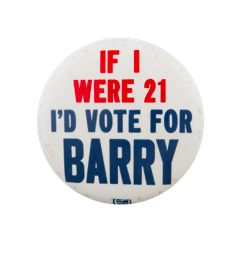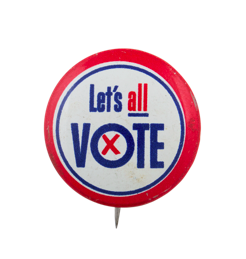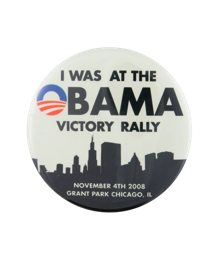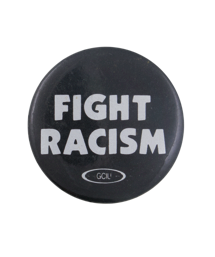America's Sordid Voting History As Told Through The Busy Beaver Button Museum
At the time of our first presidential election, only 6% of the population was allowed to vote. If you weren't a white male property-owning Protestant citizen over 21, well, voting was out of the question. Women, immigrants, Native Americans, and non-white male citizens were left out of the electoral process—or discouraged through discriminatory regulations—for decades.
It's taken two centuries of acts, amendments, marches, and heated debates to get to the (mostly) inclusive voting system we have today. And although the popular pinback button wasn't patented until 1896, buttons in some form have been in use for just as long.
So now that the smoke of our nation's sordid voting history has cleared, let's take a button-powered look back at the progression of our voting rights.

_
1789 George Washington is elected first president of the United States—by a Congress made up of only white male Protestant property-owners over the age of 21.
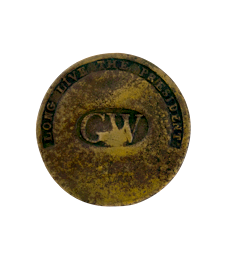
"Long Live the President" button used to announce the first presidential inauguration.
1810 Religious prerequisites for voting are removed (hallelujah!).
1848 The Seneca Falls Convention takes place, helping spark the women's suffrage movement.
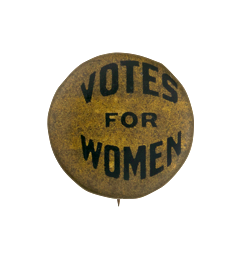
"Votes for Women" button (circa 1910) used by the National Women's Suffrage Association.[/caption]
1856 Property ownership prerequisites removed.
1868 After Lincoln helped abolish slavery, the 14th Amendment is passed, granting former slaves citizenship.
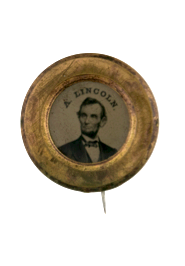
"A. Lincoln" button, circa 1864.
1870 The 15th Amendment is passed: The right to vote cannot be denied "on account of race, color, or previous condition of servitude." Former slaves and (male) African Americans are allowed to vote—though use of poll taxes, literacy tests, and other means of disclusionary regulations prevent most from doing so.
1876 The Supreme Court rules that Native Americans are not citizens as defined by the 14th Amendment and, thus, cannot vote.
1882 The Chinese Exclusion Act bars people of Chinese ancestry from becoming U.S. citizens, thus excluding them from voting.
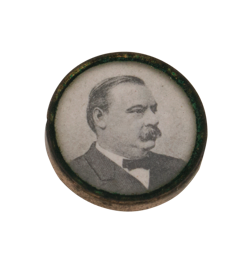
"Grover Cleveland" button used in his 1884 presidential campaign. Cleveland campaigned against voting rights for African Americans and extended the Chinese Exclusion Act originally signed by President Arthur.
1896 Celluloid Pin-back button invented and used in the McKinley vs. Bryan campaign.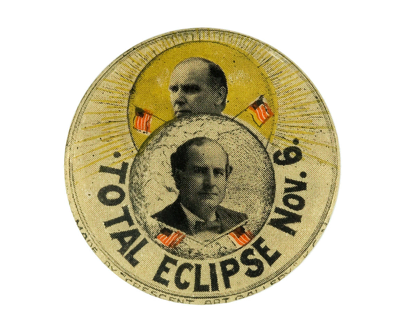
1900s Buttons become popular tools for campaigning to younger voters.
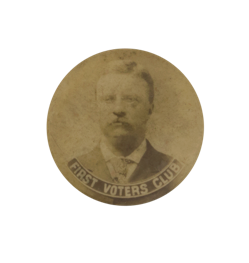
"First Voters" clubs spring up on college campuses helping secure Theodore Roosevelt's 1904 win.
1919 Native Americans given ability to earn citizenship—thus the right to vote—through military service.
1920 The 19th Amendment is passed extending the vote to women.
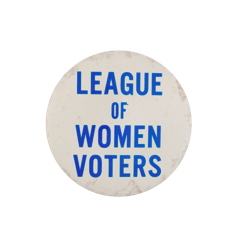
The "League of Women Voters" was founded in response to 20 million American women having the newfound right to vote.
1946 Filipinos and indigenous people from India become eligible for U.S. citizenship.
1952 The Walter-McCarran Act grants all people of Asian ancestry right to become citizens.
1961 The 23rd Amendment is passed, giving residents of Washington D.C. the right to vote in presidential elections.
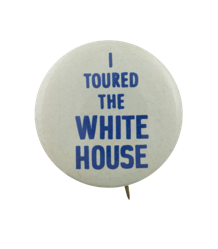
"I Toured The White House" button.
1963 The March on Washington takes place, encouraging the Civil Rights Act (1964) and giving precedence to the Selma Voting Rights Movement.
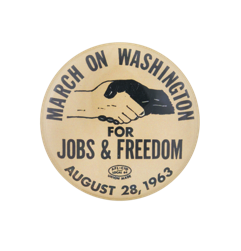
"March on Washington for Jobs & Freedom" button.
1964 The 24th Amendment is passed, prohibiting poll taxes from federal elections (previously used to deter minority voters).
1965 Encouraged by the Selma Voting Rights Movement, the Voting Rights Act is passed, forbidding discriminatory voting restrictions.
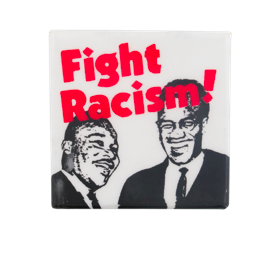
"Fight Racism Martin Luther King and Malcolm X" button.[/caption]
1971 The 26th amendment is passed, lowering the minimum voting age to 18.
1975 An amendment to the Voting Rights Act requires voting materials be made available in multiple languages.
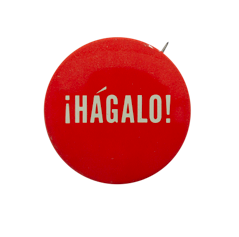
"¡HÁGALO! button (Spanish for "Do it!").
1976 The satirical Nobody for President campaign emerges, highlighting voter apathy while offering real suggestions to counteract it—including making Election Day a federal holiday (this is still being proposed to this day).
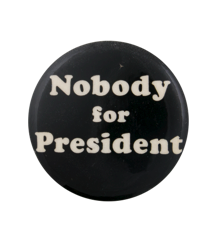
"Nobody for President" button.
1993 The National Voter Registration Act (aka the "NVRA" or "Motor Voter Act") is passed, making voter registration more accessible.
2001 The National Commission on Federal Election Reform urges states to allow felons to regain voting rights after serving their time.
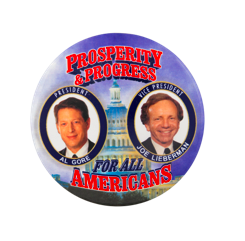
"Prosperity and Progress for All Americans" button.
2002 The Help Americans Vote Act (HAVA) is passed in response to issues with the 2000 election, one of the most controversial elections in American history.
2008 Barack Obama is elected, becoming nation's first black president.
2013 The Supreme Court strikes down Section 4 of the Voting Rights Act, which required states with a history of racial discrimination get clearance from Congress before changing any voting laws. Several states take it as an opportunity to pass controversial voter ID laws.
2016 You use your hard-fought right to vote THIS election season.
---
Inspired by these historical political buttons? Create your own campaign buttons.


